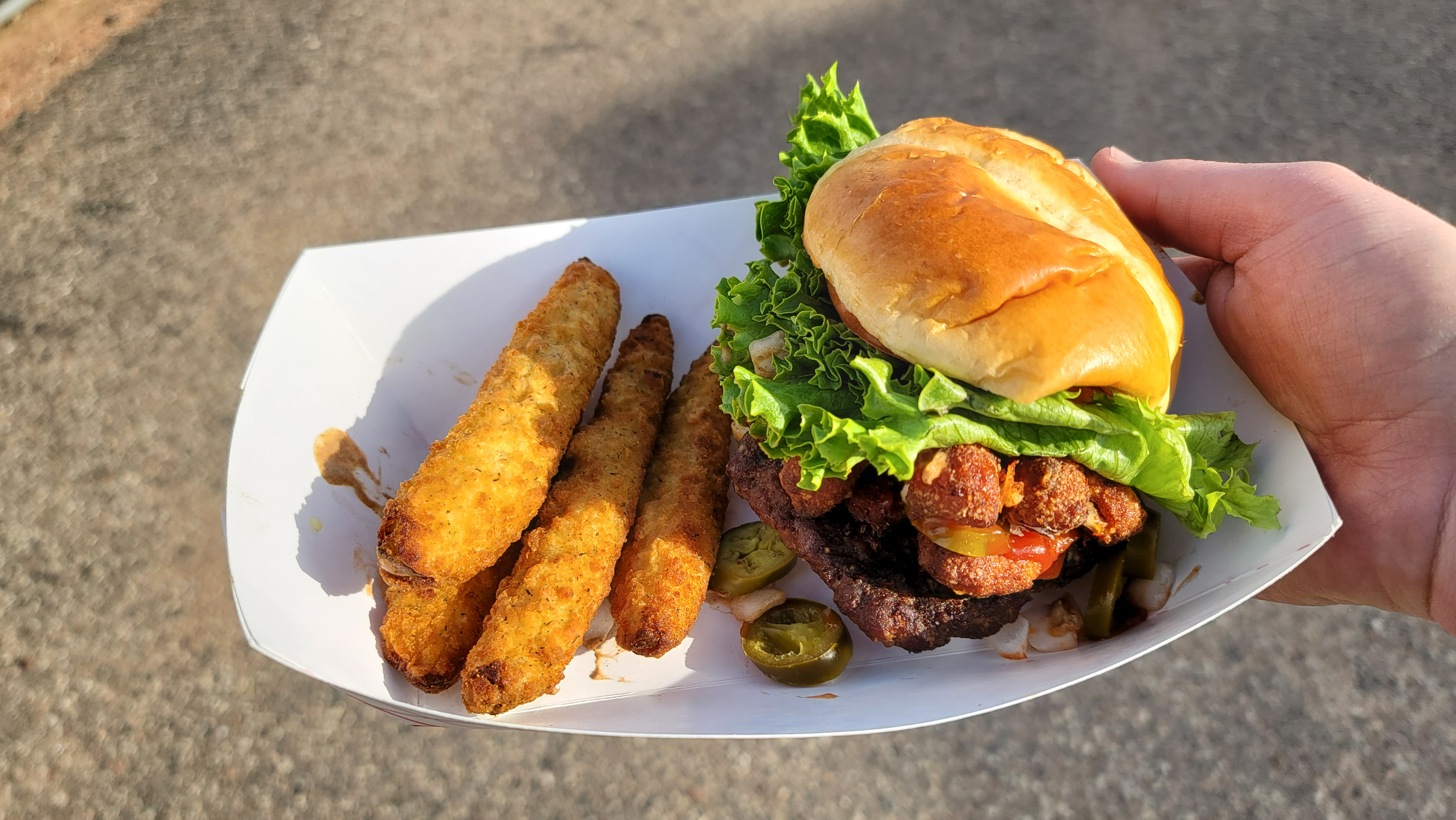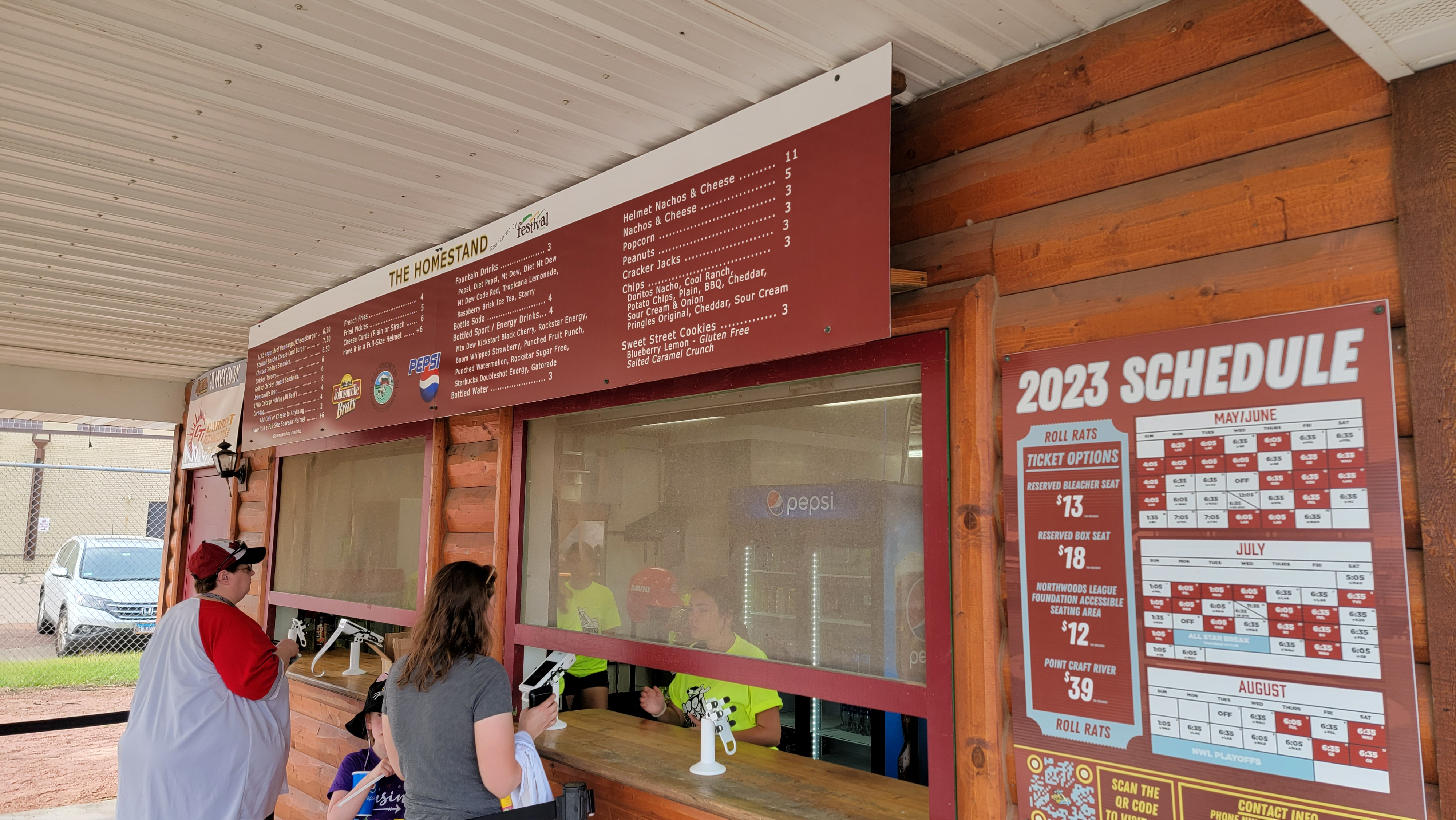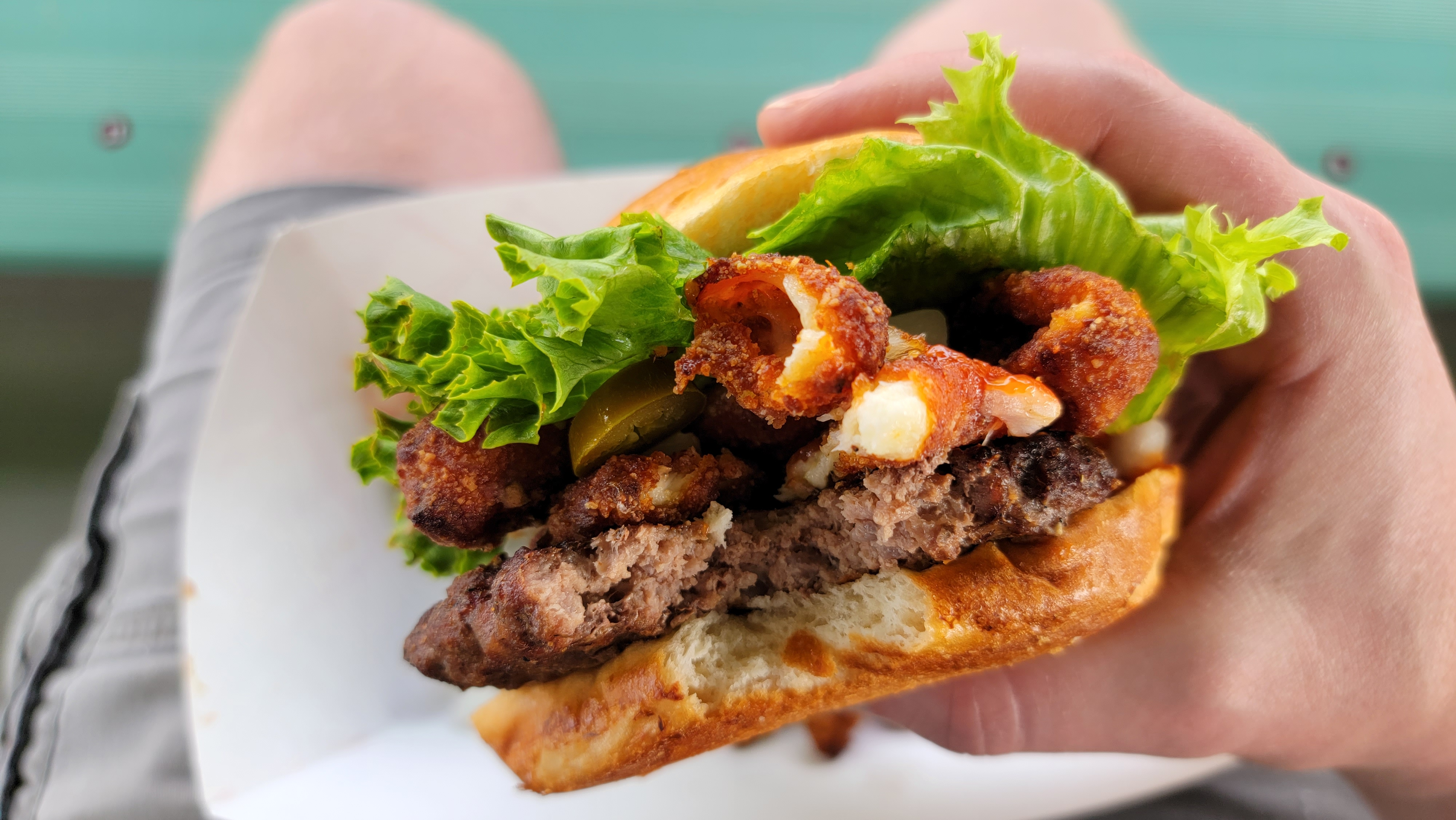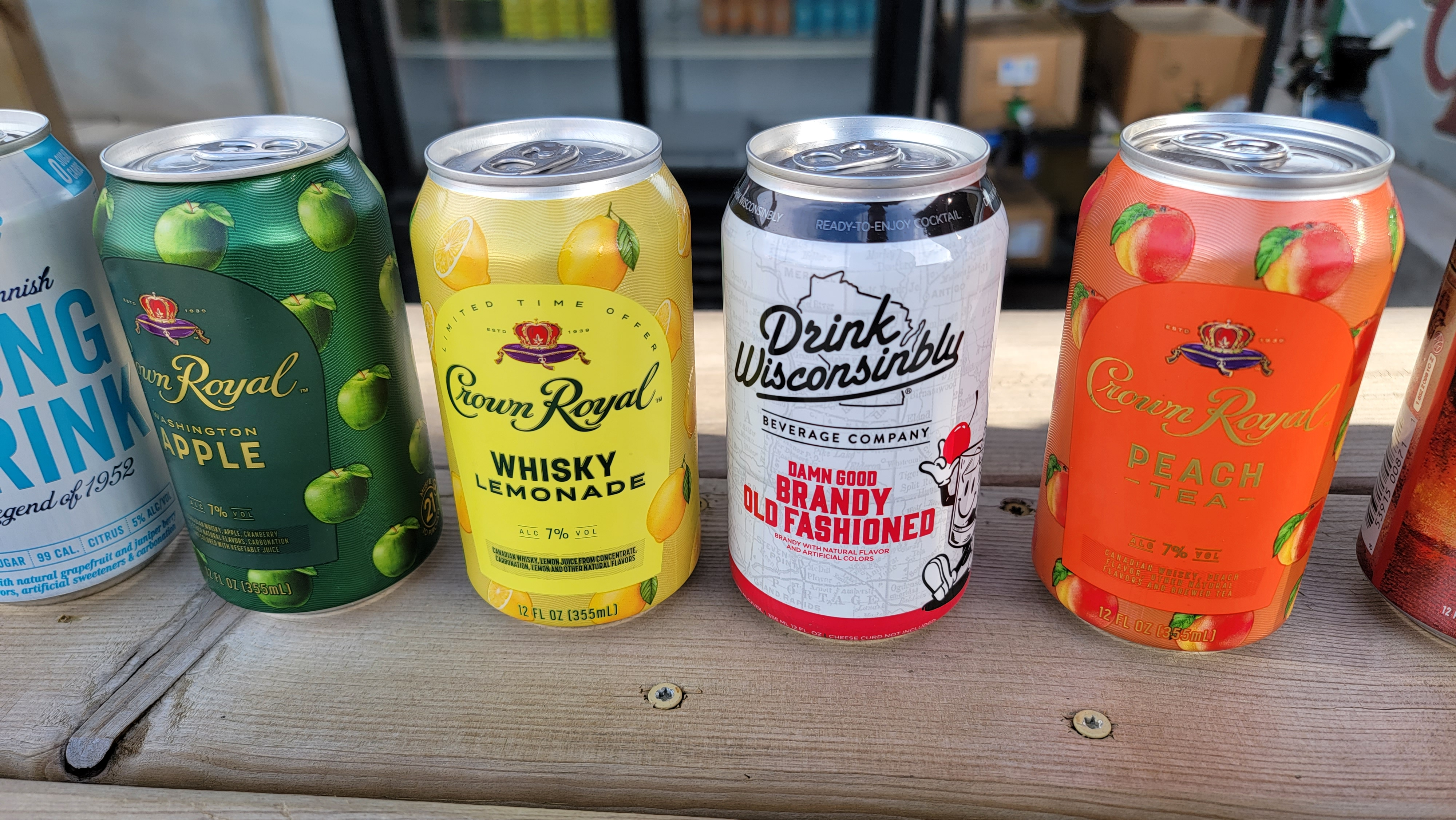The Food At Small Ballparks Has Never Been Better
Concessions at small-town baseball venues are catching up to the majors.
It might sound counterintuitive, but most sports fans agree that if you're looking for the best game day experience, minor league or regional league ballparks blow the majors out of the water. What makes this the case? Is it the hometown energy, the charged atmosphere, or simply the idea of paying far less for a front-row seat? All of these, I'd argue, are great reasons to attend your local ballpark. But there's one benefit that might outstrip them all: shorter lines at the concession stands, and arguably better food than any MLB concourse has to offer.
The food is a bigger deal than you'd think. Many small-town sporting venues operate on razor-thin budgets, and it can be tough to shed a reputation for warm beer and cold burgers. Plus, the amount of hands-on work that goes into staffing, prepping, and running a food service operation is only more apparent when there are fewer hands working the grill.

Yet even more than a team's on-field performance, this type of fan experience is what keeps the lights on and bleachers full. Tyler Miller, operations manager for the Wisconsin Rapids Rafters, knows the importance of bringing fans through the gate. This Northwoods League team makes its home in a city of less than 20,000, and the stadium seats 1,611 people.
"Food and beverage can be one of the huge money makers or huge money losers in a ballpark," says Miller. "We try to keep that at the top of our list of importance."
But what does that effort actually look like? Using the Rafters and Witter Field as an example, here's a breakdown of a concession stand's run-up to opening day.

Time to thaw out the kitchen
To understand what it takes to kick off a new season, we must first examine the end of the previous one. Ballparks in more temperate climes might stay open year-round, but for teams like the Rafters, winter must have its say.
"It's crazy," says Miller. "Being an open-air venue, we actually tear down and fully winterize the ballpark at the end of the season." This process includes clearing out the walk-in freezer and cooler in preparation for maintenance and shutdown. Even the water is turned off, to keep the pipes from freezing.
"As far as the grill and similar things go, we push those into the middle of the concession building, in case there were to be wall leaks," Miller explains. "That building stays dry, just super cold. Things like the kitchen utensils, bowls, and that kind of stuff, we deep clean and store for the winter."
Once this is done, the offseason staff locks up the works and waits for spring. "If we do a good job of tearing it down, when we go to open the doors in March, everything is the way we left it, just needing a wipe down and cleanup," Miller adds.
New season, new menu, new faces
Just as with the on-field roster, the fall and early spring are also great times for venue upgrades. The concessions business is a competitive one, and small-town teams vie to offer the best experience in their league. In the Rafters' case, this gave general manager Ken Day a chance to work a little magic. With an extensive background in the food and beverage industry, he took this most recent offseason as an opportunity for his team to make better use of its limited space.
The auction block is one of the best places to snag a good bargain. Rafters management examined the offerings from local restaurants that were closing and school districts in the middle of their own renovations. This netted numerous pieces of equipment for the team, including a cafeteria-style prep line.
Fancy new cookware aside, workers are the key to ballpark concessions—and when you visit a minor or independent-league baseball stadium, you'll probably notice that the workforce skews a bit young. A summer league sport, kids out of school and looking for cash, and shifts that generally last around five hours? The math isn't hard to work out.
Assembling a ballpark concessions team involves a whole mess of seasonal hiring. And while returning employees often graduate to new positions, concessions is generally considered to be first base. Some members of the gameday staff sign up as young as fourteen.
"We're able to give [younger employees] the opportunity to get their feet wet in a real-world job and put them in the concession stand," says Miller. "After that we'll reevaluate, but that's how you get your start."
Now, before you start waving your hands about child labor laws, you should know that small-town sports venues are different from your typical fast-food gig. Everyone under sixteen is required to have a work permit, which means that they can only work until 9 p.m. Most games kick off between 6:05 and 6:35 p.m., and the workers are expected to show up "a half hour or 45 minutes before the gates open to get their station prepped and ready to go." That's around four hours' work for a couple nights each week, from the end of May until the second week of August. As someone who firmly believes that every single member of our society should be required to spend at least two months working a customer service job, I'd say this seems like an attractive gig.
But it's not all about Gen Z. To set the table for the night's service, the grillers and food and beverage managers typically arrive earlier. This is critical, as the rush is immediate.
"When [fans] first get to the stadium," says Miller, "Everybody wants to go to the concession stand and grab some food before they go to their seats."
Orders generally slow to a steady pace between the second and sixth inning, at which point the people in charge will decide whether to hold the line or begin to make cuts. And if the game rolls past 9 p.m., the older interns and staff stick around to clean and close down.

But what about the beer?
You didn't really think I'd forget about the beer, did you? As it turns out, the process of doling out baseball's beloved golden nectar is a bit more hands-off than its hot dogs. Many small stadiums partner with regional beer distributors, who bring in their own fully functional trailers and park them on site for the duration of the season. Kegs are delivered and held in storage, requiring only a simple hookup to the taps. All the ballpark employees need to do is take your order, swipe your card, and hand over the frosty glass. As for the canned offerings, they seem to getting more interesting each passing season.
"Everybody makes it really convenient for us," Miller says, "which is really nice, being such a short seasonal team. But we go through so much product and have a lot going on in those two to three months that we're running. It's definitely a challenge, but a lot of our vendors help by being flexible."
These setups also allow for a greater variety of craft beers. I sampled a few of the Rafters' taps when I attended opening day (in super-secret reporter disguise) and found the quality to be excellent.
Overall, the culinary experience of attending small sporting venues is as unique as it is familiar. The youthful energy on the field is often matched by the staff, with both groups at the beginning of their professional lives. Thanks to streamlined delivery methods and changing tastes, I'd argue that the options at America's small ballparks have never been better. Can you argue with Tropical Beer Hug, a Sriracha Curd-Burger, and fried pickles in a stadium 1/25th the size of an MLB park? I certainly can't, and I'm thankful for it.



